
"Venus Envy Chapter I, First Holy Communion Moments Before the End," 1993-2022 (Photo: Daria Lugina)
When you step into the “Archaeology of Memory” exhibit by Chicana artist, curator and theorist Amalia Mesa-Bains at The Cheech Marin Center for Chicano Art & Culture (The Cheech) in downtown Riverside, you are transported into a realm of layered memories, filled with familiar scents, rich textures and intimate images. Each detail evokes beloved, distant times, carrying the emotional weight and cultural essence of identity.
“I am concerned with memory, because it’s functional to me. It’s a bridge between the living and the dead, between the past and the present, […] I see memory as this thread that keeps linking us together…,” expressed the artist in the video “Amalia Mesa-Bains: In Her Own Worlds”, which is on display in the show.
In the 1970s, Mesa-Bains began her journey at Galería de la Raza in San Francisco, where she organized and created Día de Muertos ofrendas under the mentorship of renowned Oaxacan artist Yolanda Garfias Woo. At the time, Día de Muertos held an especially powerful cultural significance for Chicanos. It became a vehicle for cultural expression during the height of the Chicano civil rights movement.
“For Chicanos, it was like a political and philosophical affirmation of who they are and so Dia de Muertos would be about familia, but it would also be about maybe people who were killed during a political protest, let's say, or in communities where there was police brutality,” said co-curator María Esther Fernández, artistic director of The Cheech. “So, it took on this political implication, right? The creation of these altares.”
Mesa-Bains work challenged colonialism, imperialism and the roles imposed on women within Mexican traditions, while also engaging with broader feminist struggles in the U.S. Drawing from the structure of the ofrendas or altares, she reimagined it through installations that incorporated elements like vanities, wardrobes, and desks, providing a pointed critique of the Roman Catholic Church and patriarchal systems regarding their treatment of women.
The project to create the exhibit began in 2017, when Fernández and co-curator Laura E. Pérez, PhD, a professor of Chicanx Latinx and Ethnic Studies and the chair of the Latinx Research Center at the University of California, Berkeley, decided to compile the first retrospective of Mesa-Bains' 50 years of work.
A fully immersive space

"Venus Envy II - The Virgin’s Garden" 1994. (Photo: Daria Lugina)
Located on the second floor of The Cheech, the exhibit unfolds across four distinct spaces. The first feature works from “Venus Envy Chapter I,” including a striking vanity that pays tribute to Amalia Mesa-Bains’ late sister. Fernández explains how this deeply personal piece captures the intimacy and nostalgia of their shared moments, while also serving as a powerful commentary on feminine identity. By reimagining this traditionally private, feminine object, Mesa-Bains not only honors memory but also challenges the societal roles and limitations imposed on women. The vanity becomes both a site of remembrance and a platform for rethinking how femininity can be expressed.
In the third space, visitors encounter works from “Venus Envy Chapter III: Cihuatlampa, the Place of the Giant Women”, a bold exploration of feminine power. Among the standout pieces are “Vestment of Copper,” a towering ten-foot-tall robe, flanked by two monumental stilettos. “[In this piece] Amalia is talking about women who are powerful, who are larger than life. This idea that women are bigger than the limits that patriarchy places on us,” said Fernández in Spanish.
She explains that the artist draws inspiration from Aztec cosmology, where women who died in childbirth were believed to enter the afterlife (Cihuatlampa) as warriors, becoming Cihuateotl—powerful deities tasked with guiding the sun’s rise and fall. Reclaiming this tradition, she honors the fierce, creative spirit of her comadres—fellow artists who made profound sacrifices to pursue their callings.
Some of whom chose not to have children, prioritizing their professions during years when motherhood and career often felt mutually exclusive. This piece is a tribute to women who refuse to be confined and demand space, and who, through their work and resilience, embody the legacy of a warrior.

Another striking piece is “The Virgin’s Garden,” a green armoire with a mirror that reflects the image of the Virgin of Guadalupe. Inside, the cabinets are filled with curious little objects nestled among lush, vibrant moss, transforming the sacred into something intimate and tactile. Dried rose petals and lavender flowers are scattered across the floor, creating a lingering scent that invites viewers not just to look, but to feel. The result is a fully immersive experience that blurs the line between devotion and imagination.
The power of art
For Fernandez, when art created by communities of color is presented with care and intention, it becomes more than just a visual experience; it becomes a visceral one, inviting viewers, especially those who have long been marginalized in mainstream art spaces, to feel seen and affirmed.
“One of the most powerful contributions of Chicano art, born out of and shaped by the Chicano Movement, is that it captured our histories, right? Our stories, which are not often told. Which are not told. Whether it's in school or in the history books, especially now with this attempt to like erase history,” she explained. “And so, I think Amalia's work does that as well.”

Amalia Mesa-Bains.
In her experience, children often walk through the exhibit in awe, captivated by the scale and presence of the work. She also ponders that for those who grew up in the U.S. during the late 1970s and 1980s, seeing such cultural affirmation in a museum setting would have been a powerful and transformative experience—one that validates identity and instills pride in a way that lasts with the person.
“Archaeology of Memory” is a vibrant celebration of heritage, tradition and cultural pride. The exhibit’s opening message, which speaks of “the life-sustaining work of remembering,” sets the tone for an experience that is both intimate and universal. As visitors walk through its evocative installations, they are invited to reflect on their own family stories. To remember becomes an act of resistance, healing and connection—one that keeps stories alive across generations.

Vestment of Copper. (Roxsy Lin)
The exhibit will be on display until August 31, 2025.

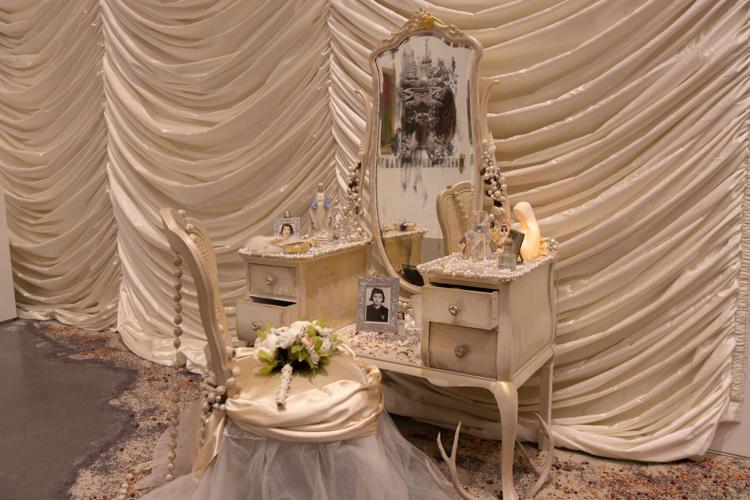
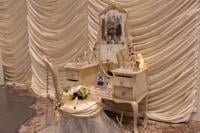
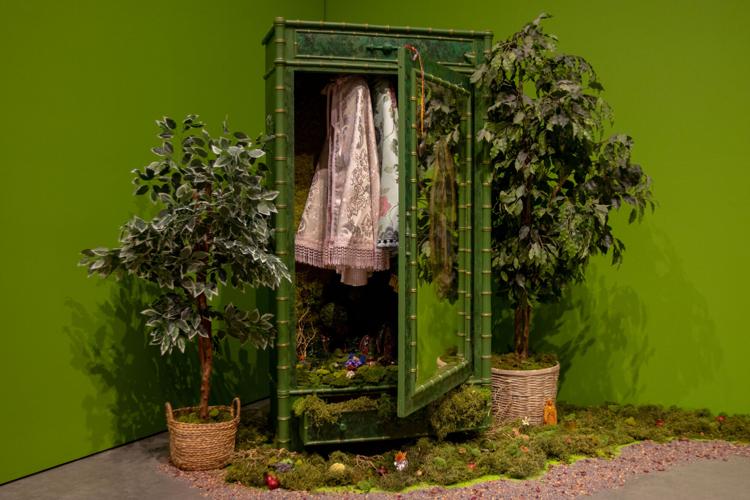
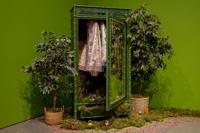

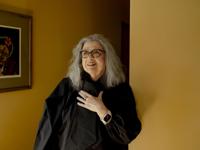

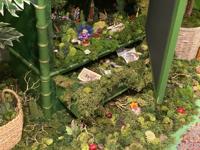
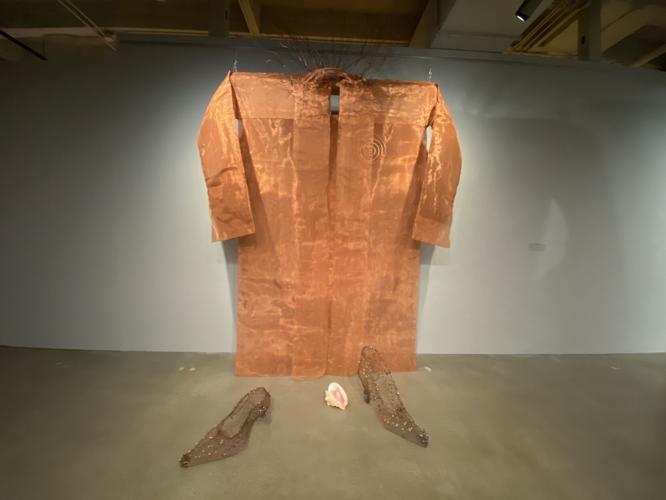
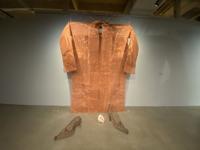

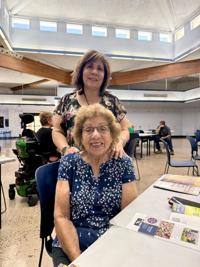



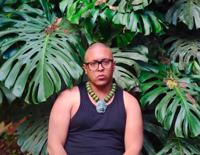


(0) comments
Welcome to the discussion.
Log In
Keep it Clean. Please avoid obscene, vulgar, lewd, racist or sexually-oriented language.
PLEASE TURN OFF YOUR CAPS LOCK.
Don't Threaten. Threats of harming another person will not be tolerated.
Be Truthful. Don't knowingly lie about anyone or anything.
Be Nice. No racism, sexism or any sort of -ism that is degrading to another person.
Be Proactive. Use the 'Report' link on each comment to let us know of abusive posts.
Share with Us. We'd love to hear eyewitness accounts, the history behind an article.